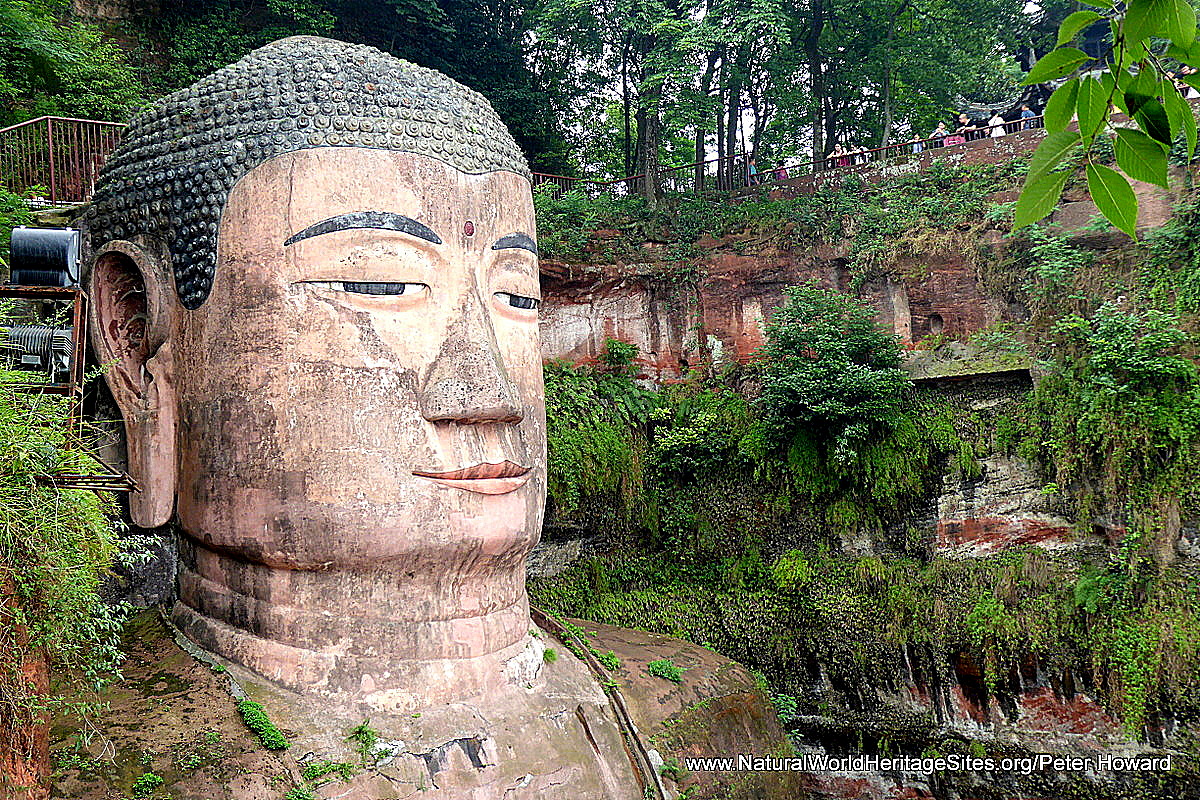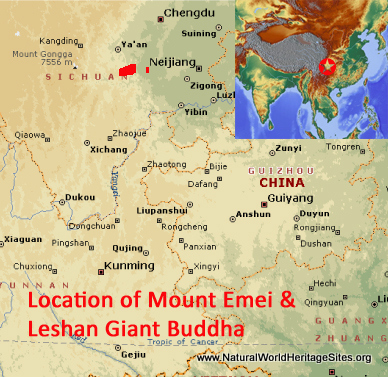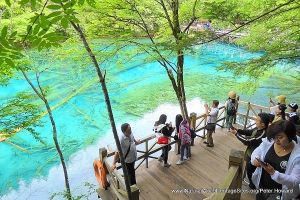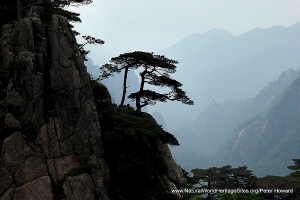EXPLORE CHINA’S MOUNT EMEI AND LESHAN GIANT BUDDHA with this slideshow, check the location map and get all the facts and information below.
For slideshow description see right or scroll down (mobile). Click to view slideshow
Location and Values: Mount Emei and the Leshan Giant Buddha Scenic Areas are located in south-central Sichuan province and are of great cultural and natural significance. Mount Emei supports an exceptionally diverse flora on account of its wide altitudinal range (2,600m) and location in a transition zone between the edge of the Sichuan Basin and the eastern Himalayas. The mountain’s summit became the chosen location for China’s first Buddhist Temple (in the 1 st century A.D.) and the addition of other temples has subsequently turned the area into one of Buddhism’s holiest sites. At a separate location some 30km from Mount Emei, the Leshan Giant Buddha is the largest Buddha in the world, carved out of a hillside at a strategic location overlooking the confluence of three rivers.
Conservation Status and Prospects. According to IUCN’s Conservation Outlook Assessment (2014) the conservation status of this site is ‘good’. The IUCN report notes that ‘the property is well administered and carefully managed under strong protection legislation and planning provisions. The site is a very significant national sacred place and is an internationally renowned religious site, which attracts huge numbers of tourists and pilgrims. Although there is some overcrowding at times, current visitor impacts are well-recognized and controlled through effective management intervention. There are a few other threats and pressures on natural values in particular, but these are not serious. Vigilance is required to ensure that the current levels of protection are maintained in the long term. The likely increase in climate change effects on species and habitats should also be closely watched. There should be improved monitoring of the site’s biological values, and a better balance of management effort between the protection of cultural values, which are given priority, and natural values.’
Links:
Google Earth
Official UNESCO Site Details
IUCN Conservation Outlook
UNEP-WCMC Site Description
Birdlife IBA
Slideshow description
The slideshow is intended to ‘tell the story’ of Mount Emei and the Leshan Giant Buddha, and features a portfolio of photos from a visit by Peter Howard in June 2017. The slideshow begins at Leshan, showing the Buddha’s strategic location at the river confluence, now overlooking a substantial city. The small protected site on the west bank of the river is full of temples, grottoes and other holy sites, but its main feature is the 71m-tall Buddha. It can be viewed from every angle, thanks to the cliff-top paths, a narrow staircase down the cliffs next to the Buddha, and tourist boats plying the river. The slideshow continues with photos from Mount Emei itself, starting below the summit at Leidongping and following the crowded path to Jieyin Monastery for the cable car ride to Jinding (Golden Summit, 3077m). The area around Leidongping is dominated by conifer forests, with a prominent understorey of rhodendendrons, many of which are in flower in early summer. The summit itself is often shrouded in mist, so the magnificent Golden Summit Temple is hardly visible, let alone the expected views of the forested slopes below. The slideshow continues with views of the lower-elevation broad-leafed forest around Wanian Temple and the path from there through the ‘monkey zone’ to Hongchun Ping. The monkeys, (Tibetan macaques) provide great entertainment value and draw substantial crowds. The final series of photos shows the 16 th -century Baoguo Temple and a few of the rare plants that are kept in its grounds.
Factfile
Website Categories: Mountains; Temperate & Boreal Forests
Area: 154 km2
Inscribed: 1996
Criteria:
- Natural habitat for biodiversity (x);
- Significant number of rare, endemic and/or endangered species (x) cultural criteria (iv,vi)





